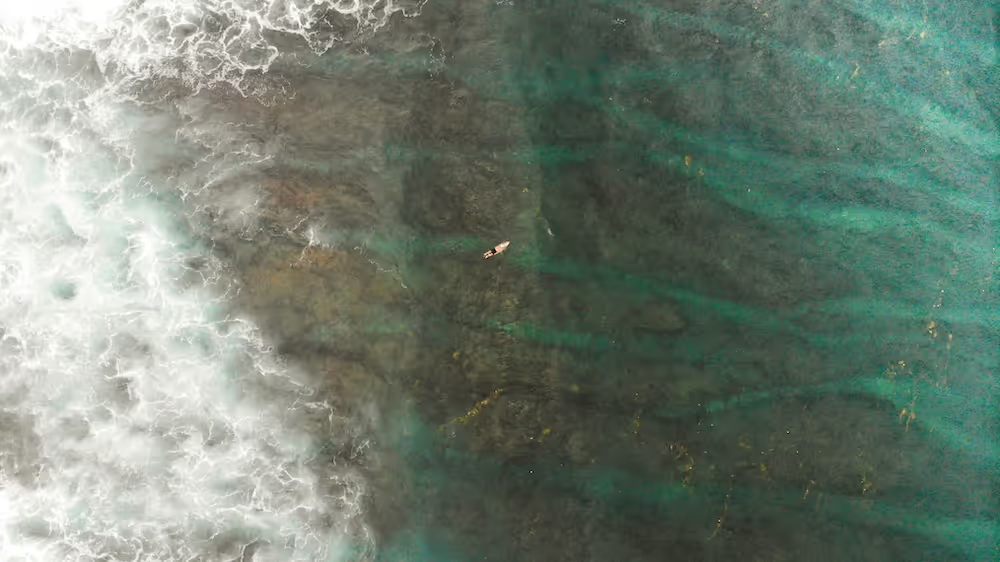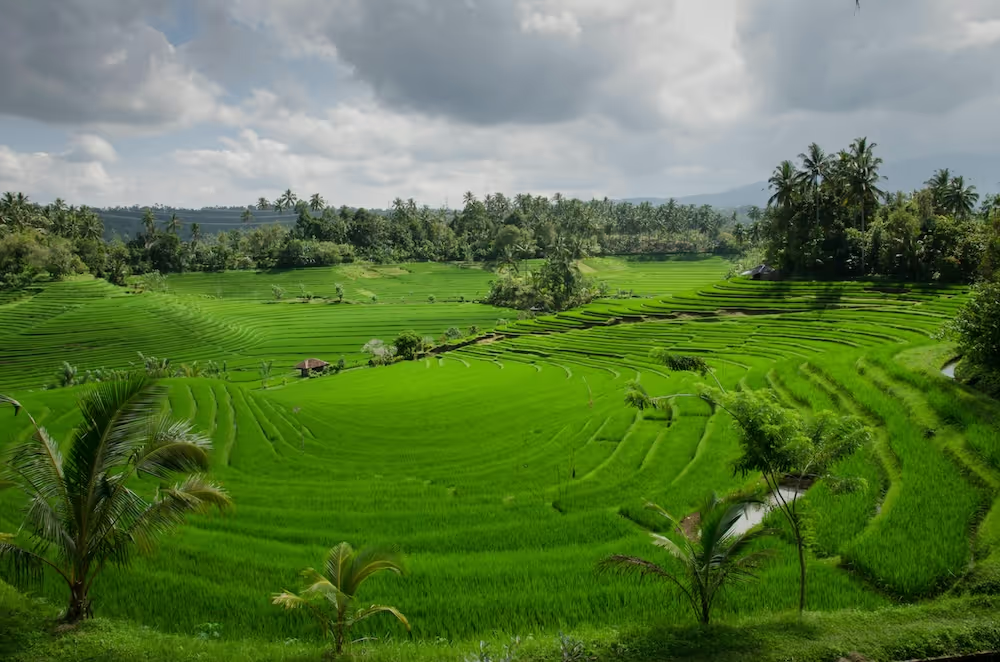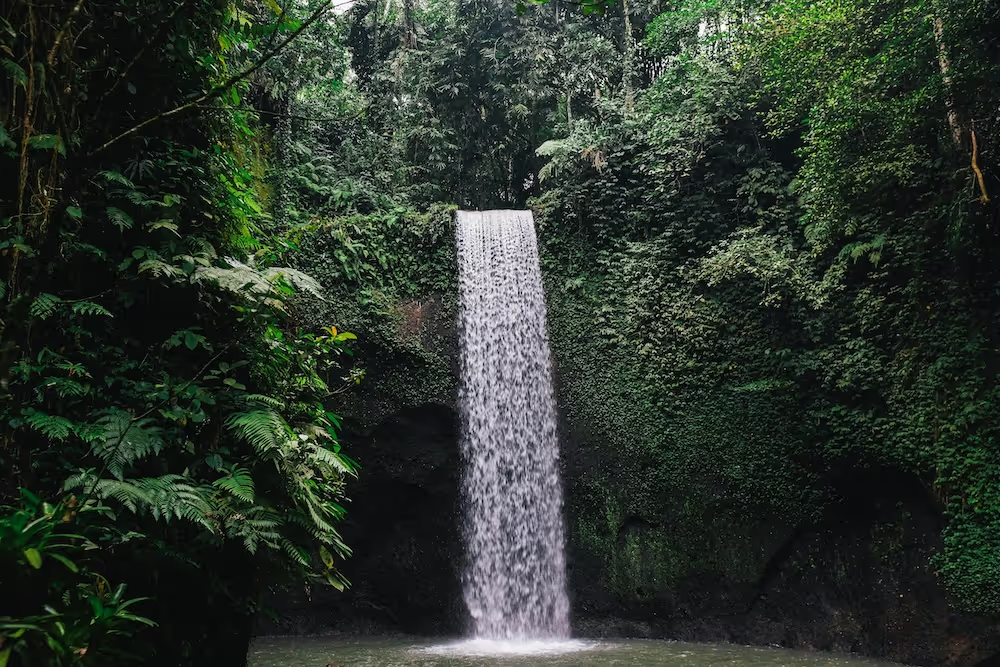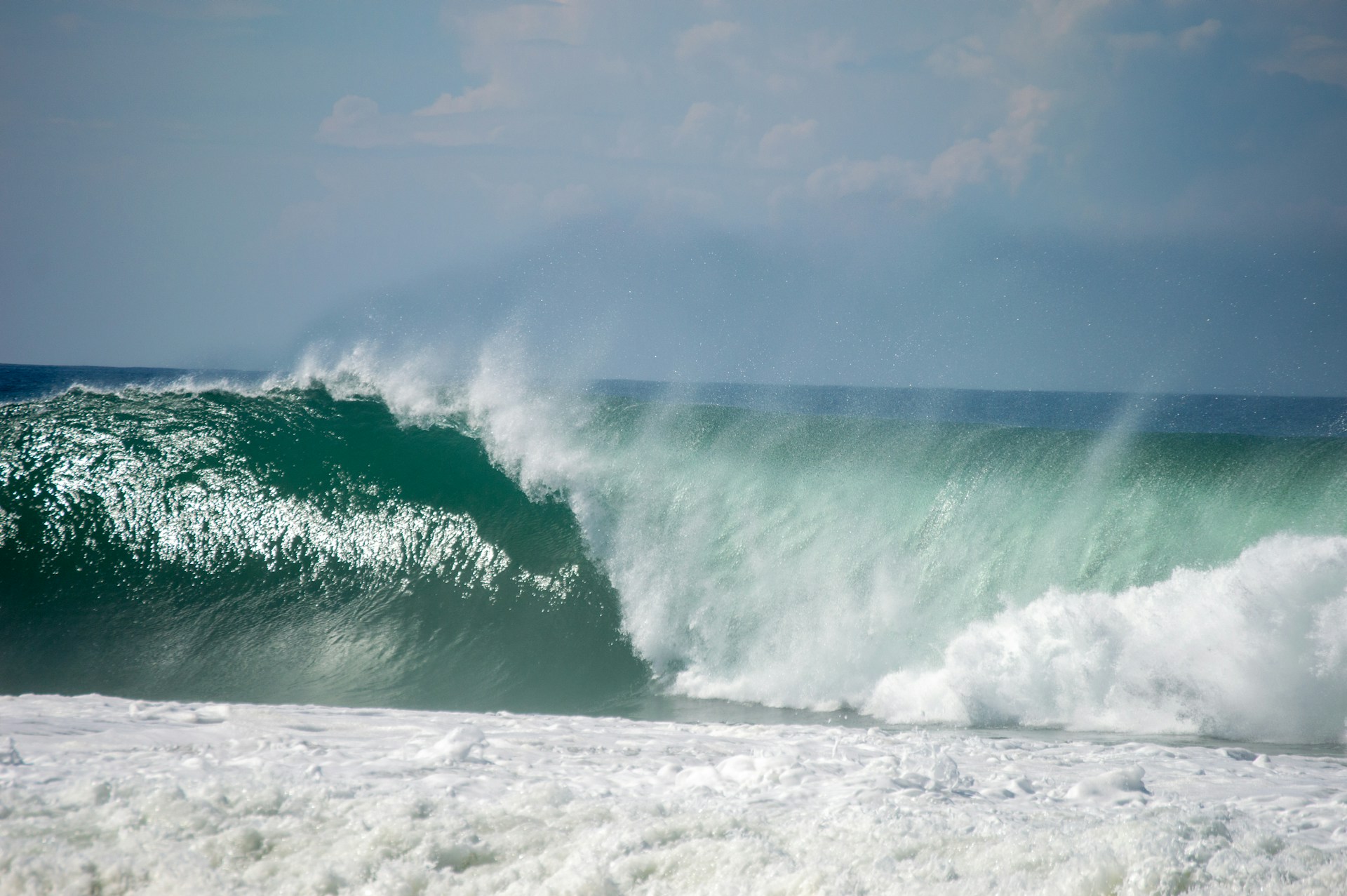Can I Still Surf During Bali’s Wet Season?

You might've heard people say that Bali's wet or rainy season is a bad time to visit. The truth is though that the "off" season might be the best time to travel.
There are less people, prices are generally lower and you can still enjoy plenty of sunny days and epic waves. And so long as you know what to expect and where to go, surfing Bali during the rain season is 100% possible!
So before you book tickets during the peak season, take a look at this guide.
We spoke with locals and Kala Surf Camp visitors alike to get their take. The following intel will ensure you have an amazing wet season surf experience in Bali!

When is the rainy or wet season?
The wet, rainy or monsoon season in Indonesia starts around October/November and ends in March/April.
It's characterised by an increase in rainfall and humidity. Heavy downpours are common, but they typically don't last long. And while you won't see the sun as much as the dry season, it's still warm and tropical.
In fact, many travellers prefer the wet season because of the lush green landscape and cooler nighttime temperatures.
Learn more about Indonesia’s wet and dry seasons.
Bali's wet season: The reality
- It usually only rains for an hour or so in the morning and an hour or so in the afternoon
- It's not uncommon for the sun to shine for the rest of the day
- The average daily temperature from December to February is still 28°C
- The average daily sea temperature from December to February is 26-28°C
- The average monthly rainfall in that same period is 280 - 350 mm (80 - 100 mm per month during the dry season)
- Being closer to inland mountains, the north coast is rainier than the south coast
- The southern part of the island, where areas such as Canggu,, Kuta, Seminyak and Uluwatu are located, are the least rainy
- The coast is mostly sunny with variant winds that blow from the south/southeast
- There's generally cloud cover in the interior, with areas above 1,000 metres (3,300 feet) being quite cool during the rainy season
Ready to Surf in Bali? Secure Your Spot Now!
The benefits of visiting and surfing Bali's wet season
The wet season can bring benefits that aren't as obvious as a price break. Here's why grabbing your board during Bali’s rainy season might just be the best decision you make!
Fewer crowds in the lineup: Not a fan of surfing with loads of other people? Neither are we! While we aim to show you Bali's most uncrowded surf spots, even during the dry months, the wet season is undoubtedly the chillest time of year for surfing. This means you won't have to share the lineup with half of Europe or America.
Better deals on accommodation: With fewer tourists around, accommodation prices tend to drop. This means you can stay in that amazing villa, boutique surf camp or beachfront bungalow for a fraction of the price.
Sneaky waves: Think that Bali isn't surfable during the wet season? Think again! You might be surprised by the quality of waves you can score when everyone else is hunkered down at home. Some breaks that are normally too crowded or fickle during the dry season are more accessible and consistent.
Lush, green landscapes: The dry season is called that for a reason. Everything looks brittle and fragile after months of intense sun exposure. The wet season, on the other hand, is when Bali really comes into its own. The jungle flourishes, rice paddies are electric green and waterfalls gush in all their glory. It truly is a sight to behold... and one you definitely don't want to miss!

A few myths about visiting during Bali's rainy season
Despite Bali's rainy season becoming more and more popular amongst travellers, there still persists a few myths about this time of year. Let's debunk them now!
"It rains all-day long"
It's totally logical to believe that wet season weather equals all-day long rain. However, this simply isn't the case in Bali.
As mentioned above, the rainy season typically brings short bursts of heavy rain in the morning and afternoon, but for the rest of the day there can be plenty of sunshine.
"The water during the wet season isn't clean"
Let's face it... due to the increase in rain, there's bound to be a little runoff from land into the ocean. But don't let that scare you!
Bali is known for its world-class surfing and part of that is due to the cleanliness and clarity of its water. There are of course beaches you might want to avoid, but the reefs around Pecatu and Uluwatu are 100% safe and clean to surf during the wet season.
"There's nothing to do and no decent waves"
It's true that the waves are better during the dry season... but that doesn't apply to every spot.
Bali’s east coast is actually better during the wet season because of their orientation towards the south-southeast swell.
And as for things to do... Bali is a tropical paradise with plenty of activities available year-round. From surfing and snorkelling to exploring temples and waterfalls, there's always something to keep you entertained.

"Nobody else visits during the wet season. Won't it be empty?"
Nope, Bali's wet season is becoming increasingly popular amongst travellers. As more people realise the benefits of visiting during this time, the island is seeing a steady flow of visitors throughout the year.
While it may not be as busy as peak season, you definitely won't be alone! And with fewer people around, it just means you'll have more space to yourself to enjoy all that Bali has to offer.
The top wet season surf spots on Bali
As you'll quickly discover, the best wet season surf spots on Bali are on the eastern coast of the island.
The reason for this is because the rainy season trade winds mostly blow offshore on this side, which creates clean and consistent waves. Here are some of our top picks for wet season surfing.
Green Balls, Bukit Peninsula
So long as steps don't bother you, Green Balls is a fantastic wet season surf spot on Bali.
This semi-secret reef break is located on the Bukit Peninsula and is known for its fast and punchy waves. Beginners might find it challenging, but intermediate and advanced surfers will have a blast here.
Sanur, East Bali
Sanur is one of the few spots in Bali that works best in the wet season.
The dominant swells shift the action away from Uluwatu and other lefthand points.
When Sanur is on, it can rival any wave in Bali, including Uluwatu and Padang Padang. The secret ingredient is medium to massive S-SE swells in the wet season with light west offshores.
Keramas, East Bali
Home to World Surf League competitions and generally considered to be Bali's most high-performance wave, Keramas is a must-visit for any surfer.
This right-hand reef break works best in the wet season with swell from the south or southeast. When it's on, you'll find long barrels and ramps perfect for aerial manoeuvres.
Serangan, East Bali
Serangan, also known as Turtle Island, is a fantastic spot for a wet season day trip.
It's a swell magnet, which means it attracts a lot of swell and doesn't need big waves to be good.
Despite being somewhat random, there's generally a peak to surf here for all skill levels. The left being longer and more inviting while the right is shorter but less favoured, which means you might even get it all to yourself!

Final words
We totally understand if you still equate wet season surfing in Bali with poorer waves, but the reality is that this time of year can be fantastic for surfing. Don't knock it before you've tried it!
With fewer crowds, great deals and the chance to score some sneaky waves in beautiful surroundings, visiting Bali during the wet season might just turn out to be your best surf trip yet.
Of course, you can always hit us up if you have further questions about Bali's rainy season. We promise to give you the inside scoop on surf spots, weather conditions and everything else you need to know to make the most out of your wet season surfing adventure!
So don't hesitate and start planning now – Bali is waiting for you with open arms, rain or shine.
More blogs you might like
FAQs
Find answers to your last-minute questions about your upcoming surf adventure with us.
Our packages include accommodation, daily surf lessons, and access to all camp facilities. We also provide surf gear for your convenience. Additional activities can be booked separately.
Travel insurance is highly recommended to cover any unexpected events. It can protect you against cancellations, medical emergencies, and lost belongings. Please check with your provider for specific coverage.
Booking is simple! Visit our Packages & Prices page to select your desired package. You can complete your reservation online or contact us for assistance.
Kala Surf Camp is located in the heart of Bali, close to the best surf spots. Our camp offers a peaceful environment while being just a short distance from vibrant local culture. You'll enjoy easy access to both surf and relaxation.
Yes, date changes can be made depending on availability. Please contact our support team as soon as possible to discuss your options. We aim to accommodate your needs whenever we can.






